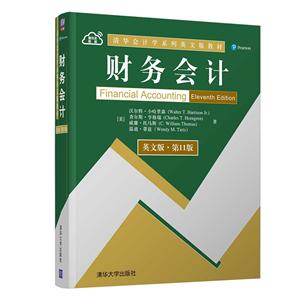About the Authors
Preface
Visual Walk-Through
Chapter 1 The Financial Statements
SPOTLIGHT The Walt Disney Company
Explain Why Accounting Is the Language of Business
Who Uses Accounting Inrormation?
Two Kinds of Accounting: Financial Accounting and Management Accounting
Organizing a Business
Explain and Apply Underlyjng Accounting Concepts, Assumptions, and Principles
The Entity Assumption
The Continuity (Going-Concern) Assumption
The Historical Cost Principle
The Stable-Monetary-Unit Assumption
Apply the Accounting Equation to Business organizations
Assets and Liabilities
Owners' Equity
Evaluate Business Operations Through the Financial Statements
The Income Statement Measurcs Operating Performance
The Statement of Retained Earnings Shows What a Company Did with Its Net Income
The Balance Sheet Measures Financial Position
The Statement of Cash FIows Measures Cash Receipts and Payment
Construct Financial Statements and Analyze the Relationships Among Them
Evaluate Business Decisions Ethically
American Institule of Certified Public Accountants Code of Professional Conduct
End-of-Chapter Summary Problem
Chapter 2 Transaction Analysls
SPOTLIGHT The Walt Disney Company Records Millions of Transactions a Year!
Explain What a Transaction Is
Define "Account," and List and Differentiate Between Different Dpes of Accounts
Assets
Liabilities
Stockholders' (Owners') Equity
Show the Impact of Business Transactions on the Accounting Equation
Example: Alladin Travel, Inc.
Transactions and Financial Statements
Mid-Chapter Summary Problem
Analyze the Impact of Business Transactions on Accounts
The T-Account
Increases and Decreases in the Accounts: The Rules of Debit and Credit
Additional Stockholders' Equity Accounts: Revenues and Expenses
Record (Journalize and Post) Transactions in the Books
Copying Information (Posting) from the Journal to the Ledger
The Flow of Accounting Data
Accounts ancr Posting to the Ledger
Construct and Use a Trial Balance
Analyzing Accounts
Correcting Accounting Errors
Chart of Accounts
The Normal Balance of an Account
Account Formats
Analyzing Transactions Using onIoly T-Accounts
End-of—Chapter Summary Problem
Chapter 3 Accrual Accounting & Income
Chapter 4 Internal Control & Cash
Chapter 5 Short-Term Investments & Receivables
Chapter 6 Inventory & Cost of Goods Sold
Chapter 7 Plant Assets, Natural Resources, & Intangibles
Chapter 8 Long-Term Investments & the Time Value of Money
Chapter 9 Liabilities
Chapter 10 Stockholders' Equity
Chapter 11 Evaluating Performance: Earnings Quality, the Income Statement, & the Statement of Comprehensive Income
Chapter 12 The Statement of Cash Flows
Chapter 13 Financial Statement Analysis
APPENDIX A: Apple Inc. Annual Report
APPENDIX B: Under Armour, Inc. Annual Report
APPENDIX C: Typical Charts of Accounts for Different Types of Businesses
APPENDIX D: Summary of Generally Accepted Accounting Principles (GAAP)
APPENDIX E: Summary of Differences Between U.S. GAAP and IFRS Cross Referenced to Chapter

















